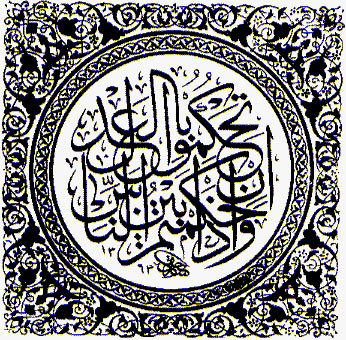|
Calligraphy Social Studies 8/ ROGATE
|

|
 |
|
Social Studies 8/ROGATE Mrs. Brown Calligraphy Calligraphy is the most important and pervasive element in Islamic art. It has always been considered the noblest form of art because of its association with the Qur’an, the Muslim holy book, which is written in Arabic. Because Islamic leaders saw in figural arts a possible implication of idolatry, Islam's early theocracy looked to the artistry of calligraphy for religious expression. In Islamic and Arabic cultures, calligraphy became highly respected as an art -- the art of writing. STaM is an acronym for three of the sacred Jewish scribal items—[Sifrei] Torah, the scrolls containing the first five books of the Bible, Tefillin, leather boxes containing scriptural passages worn during the morning prayers, and Mezuzot-- parchments on which a prayer is written, and which Jews place on their doorposts. According to the Jewish tradition, when scribing STaM, some letters are given special designs. Called tagin, they are flourishes of upward strokes. In Medieval Europe, calligraphy flourished in the monastic scriptoriums. The increasingly prominent role of the Church during the Middle Ages created a high demand for religious texts. Monks were forced to manually copy thousands of texts, and used calligraphy in order to acquire a consistent look. Since much of Europe was illiterate, pictures were often added to teach Christian ideas. The resulting manuscripts from this era are known for their ornately illuminated pages and beautiful calligraphy. YOUR TASK: A. Research examples of all three forms of religious calligraphy. B. Create a poster (24x36) which: • shows examples of each form of religious calligraphy • details the historical background of each • gives information regarding scribal training, conditions, equipment, requirements, etc. In your research, try to determine when writing becomes art? Are there any examples today? |
Links: |